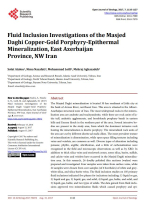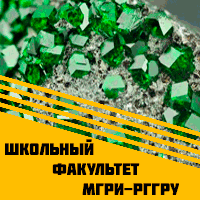Добрый день, Коллеги. Важное сообщение, просьба принять участие. Музей Ферсмана ищет помощь для реставрационных работ в помещении. Подробности по ссылке
Fluid inclusion investigations of the Masjed Daghi copper-gold porphyry-epithermal mineralization, East Azerbaijan province, NW Iran / Исследование флюидных включений в медно-золотой порфирово-эпитермальной минерализации Масджед-Даги, Иран
The Masjed Daghi mineralization is located 30 km southeast of Jolfa city at the bank of Araxes River, northwest Iran. This area is situated in the AlborzAzarbaijan structural zone of Iran. The most widespread rocks in the mineralization area are andesite and trachyandesite, while there are rock units of latite tuff, andesitic agglomerate, and hornblende porphyry basalt in eastern hills and Eocene flysch in the southern part of the area. Several intrusive bodies are present in the study area, from which the dominant intrusive rock hosting the mineralization is diorite porphyry. The mineralized rock units of the area are cut by different diorite ad mafic dikes. The most prevalent texture of mineralization is dissemination, while open space filling textures including veins and veinlets, are common as well. Diverse types of alteration including potassic, phyllic, argillic, silicification, and a little of carbonatization were recognized in the field and microscopic observations as well as by XRD. In addition to thick silica veins and stockwork zones, some silica, barite, sulfide, and calcite veins and veinlets have occurred in the Masjed Daghi mineralization area. In this research, 26 doubly polished thin sections (wafers) were prepared and investigated. Four samples were taken from surface veins, while 22 samples were chosen from core samples (of 6 boreholes) of white and greywhite silica, and silica-barite veins. The fluid inclusion studies on 105 primary fluid inclusions indicated five phases for inclusions including: 1) liquid or gas, 2) liquid and gas, 3) liquid, gas, and solid, 4) liquid, gas, halite, and solid, and 5) liquid, gas, halite, and two types of solids. <...>




